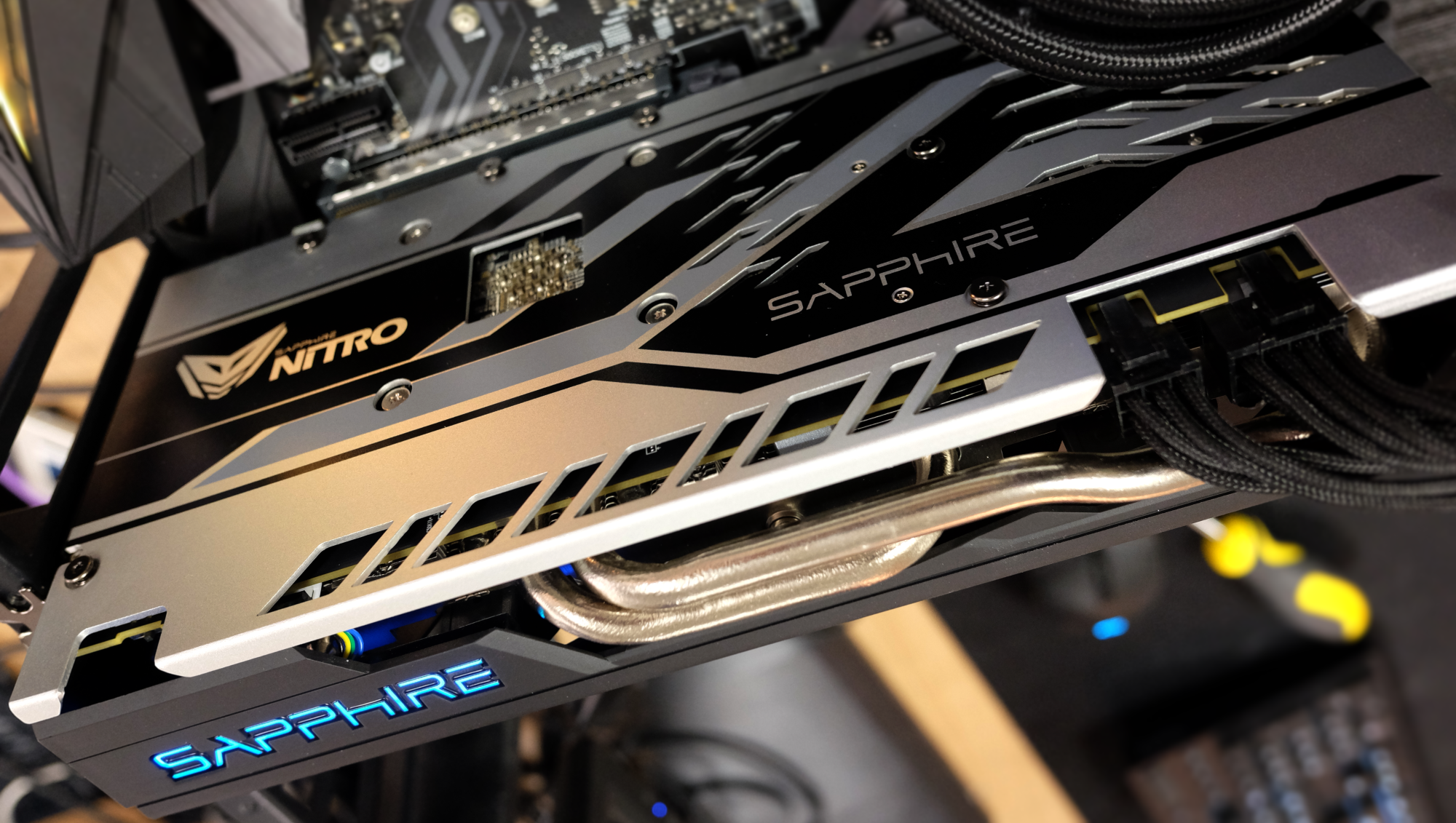TechRadar Verdict
Undoubtedly this isn’t the card we expected AMD to launch right now. The RX 580, is no Titan killer, nor does it change the GPU ecosphere in any meaningful way, however it just slips in, taking back that value crown, away from Nvidia’s GTX 1060.
Pros
- +
Solid 1080p performance
- +
Impressive price point
- +
Sapphire’s DD cooler stunning
Cons
- -
3GB GTX 1060, still better value
- -
Not Vega
Why you can trust TechRadar
So then, let’s cut straight to the point. This isn’t Vega. Nope, this isn’t the heady heights of that next gen 14nm GPU architecture. This isn’t a brand new flagship finally joining us after AMD’s long absence of almost two years from the high end GPU competition. Nope, this is, in short, a rebadge. Or at least, that’s what the critics will tell you.
So what do we mean exactly by 'rebadge'? Well in short, you take a well-established architecture like Polaris, and the RX 480. You go back to the foundries where the GPUs are carefully crafted onto the silicon. You perfect the procedure. And then you take the best of the best of the same architectural design, on the same manufacturing process, bump up the clock speeds, and resell them, usually as a lower tier model than before.
Traditionally we’d see this when a new architecture made its first heady foray into the headlights of mainstream consumers. And typically those re-badges would be only seen on the lower end of the spectrum. You’d have two top tier cards based off the new architecture, with last generations high end, dropping down a designation, and so on. This makes the RX 580 somewhat of an oddity, as without any major flagship high-end GPU launch, nor a designation drop, it merely comes across as an overclock, for a card that’s roughly the same price as its now relegated older sibling.
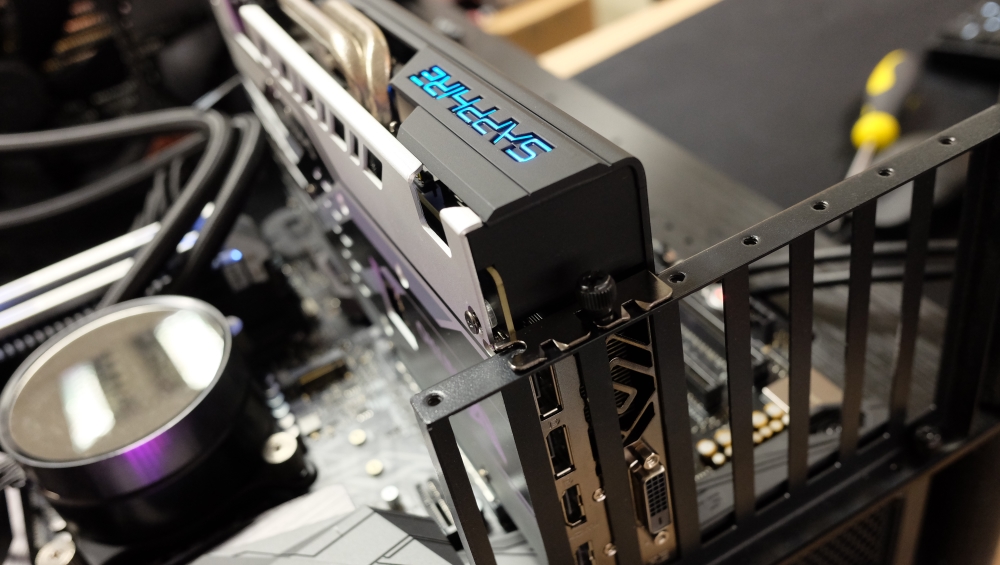
Here is the Sapphire Radeon RX 580 Nitro+ configuration sent to TechRadar for review:
Stream Processors: 2,304
Texture Units: 144
ROP Units: 32Base Clock: 1,340 MHz
Boost Clock: 1,411 MHz
Video Memory: 8GB GDDR5
Memory Clock: 8 GHz
Memory Bus: 256-Bit
Power: 1x8, 1x6
Connectivity: DVI-I, HDMI, DisplayPort
Specifications
Don’t believe us? Well let’s take the cores apart. The RX 580 8GB (and RX 480 8GB), come packing 2304 Stream Processors, embedded into 36 Compute Units, 144 Texture Units, 32 ROPs, an 8 Gbps memory clock, a 256-bit memory bus, and the exact same GCN 4.0 architecture as before.
The only differences stemming from core clocks and TDP, with the RX 580 requiring 185W of power, versus the 480s 150W, and a core clock boost of no more than 137 MHz, at least on the reference PCB. Of course these specs will be tweaked by the AIB partners such as Sapphire, Asus, MSI and others, but you won’t see a great deal of difference outside of these original numbers.
Performance
So is the RX 580 dead on arrival? Not by a long shot. This is a card that isn’t designed to shake up the ecosystem, merely balance it. As we’ve seen with all of Global Foundaries’ 14nm and 28nm products, 100 MHz goes a long way into improving performance.
Whether that’s Zen, the Fury X, or even AMD’s RX series of cards, pumping that clock speed up, even fractionally, can massively affect performance.
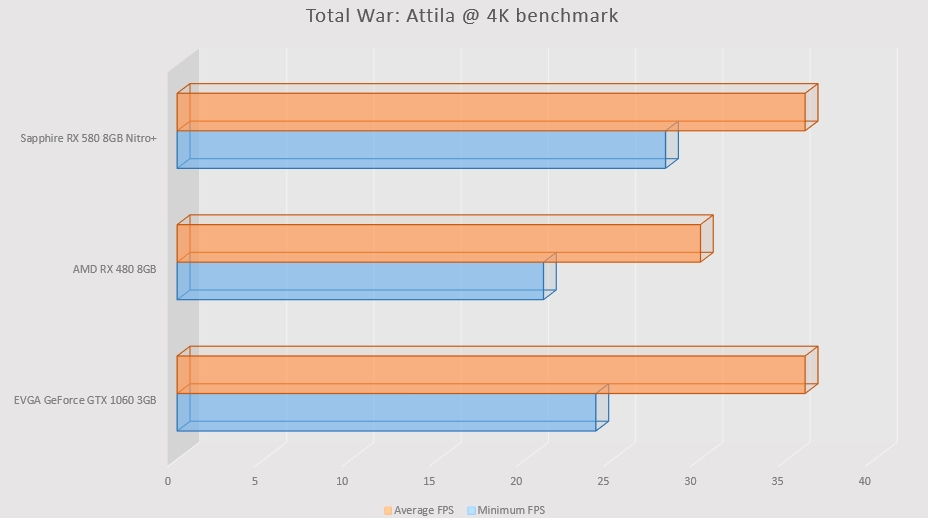
Side by side, our Sapphire RX 580 8GB Nitro+ hands last generation’s Pillsbury Doughboy its fat white ass when it comes to 1080p and 1440p performance.
Gaining on average around 12-percent across all of our testing titles, with a staggering 1,500 points in Firestrike over the RX 480. To put that in perspective, it’s the equivalent of going from a GTX 1070 to a GTX 1080.
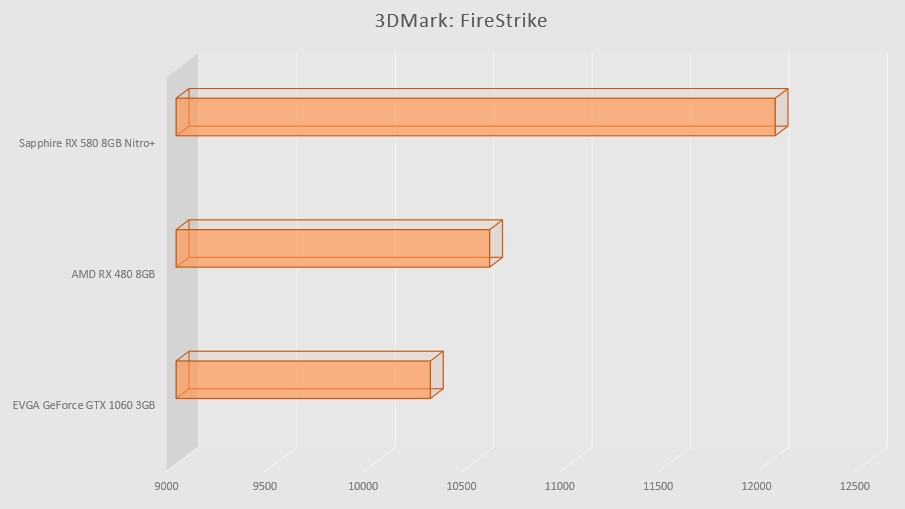
Are we suggesting that those proud owners of RX 480s jump ship and grab this card? Not at all. In fact, it’s likely that if you’re really itching for the extra frame rate, without spending the dollar, you simply overclock your own 480 by the same amount to see similar gains.
The RX 580 is ultimately designed for those still stuck on Nvidia’s 700 series GPUs, or AMD’s 300 series graphics solutions. It’s an upgrade path for those who are just about reaching that GPU itch. If you’re looking to play the latest games at 1080p, the RX 580 is likely one of the strongest value offerings you can purchase today.
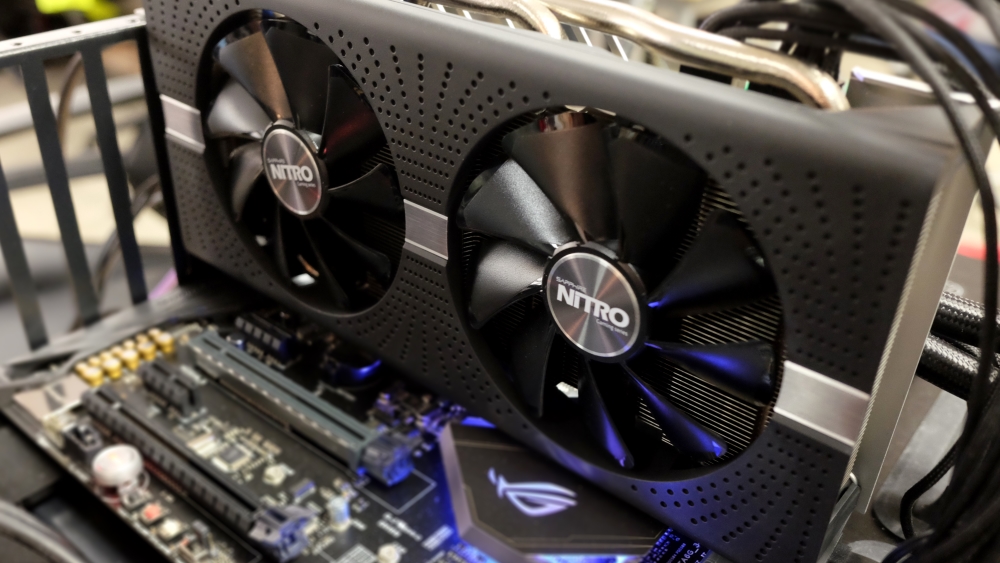
Design & Cooling
But what about the card?! Well Sapphire’s Radeon RX 580 Nitro+ is a stunning piece of craftsmanship.
The double dissipation, dual fan design has always been a solid performer when it comes to noise reduction, and overall cooling potential, something quite obvious as soon as you look at just how high they’ve managed to boost those base clocks on the 580.
The inclusion of a black and white back plate really spruces up any build. Combine that with a simple single blue LED logo and Sapphire really have nailed it on this one.
That said, it’s nothing if not a touch bulky. And by a touch, we mean "good lord is it big!" It’s still a two slot card, but the overall dimensions of this AIB configuration is just ridiculous in contrast to the competition. Especially as we start to see smaller configurations from the likes of Gigabyte make it to market.
What is impressive is that hefty overclock they’ve leveraged onto the base clock. Coming in at 1,340 MHz, this is a fairly substantial deal, and it’s easy to see where they managed to leverage the extra 10% performance over the last gen (if you can call it that) RX 480.
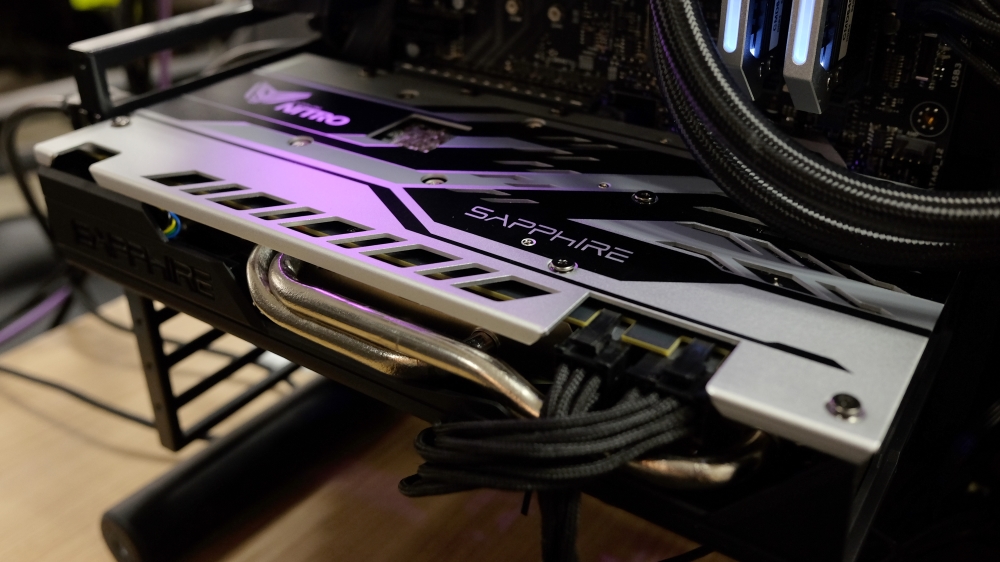
Final verdict
Ultimately the RX 580 is a card for those looking to upgrade to something capable of playing the latest AAA titles comfortably at 1080p.
It’s a nice subtle upgrade on last generation’s RX 480, fighting to retain that value per dollar crown.
Although it doesn’t quite hit the market on best bang for the buck, for the performance it offers, it’s an impressive price.
For those looking to the high end? We can only hope this means Vega is closer than we originally thought. Otherwise, this re-release strategy that AMD has pulled here would make very little sense, at least from a nomenclature stance.

Zak is one of TechRadar's multi-faceted freelance tech journalists. He's written for an absolute plethora of tech publications over the years and has worked for Techradar on and off since 2015. Most famously, Zak led Maximum PC as its Editor-in-Chief from 2020 through to the end of 2021, having worked his way up from Staff Writer. Zak currently writes for Maximum PC, TechRadar, PCGamesN, and Trusted Reviews. He also had a stint working as Corsair's Public Relations Specialist in the UK, which has given him a particularly good insight into the inner workings of larger companies in the industry. He left in 2023, coming back to journalism once more. When he's not building PCs, reviewing hardware, or gaming, you can often find Zak working at his local coffee shop as First Barista, or out in the Wye Valley shooting American Flat Bows.
